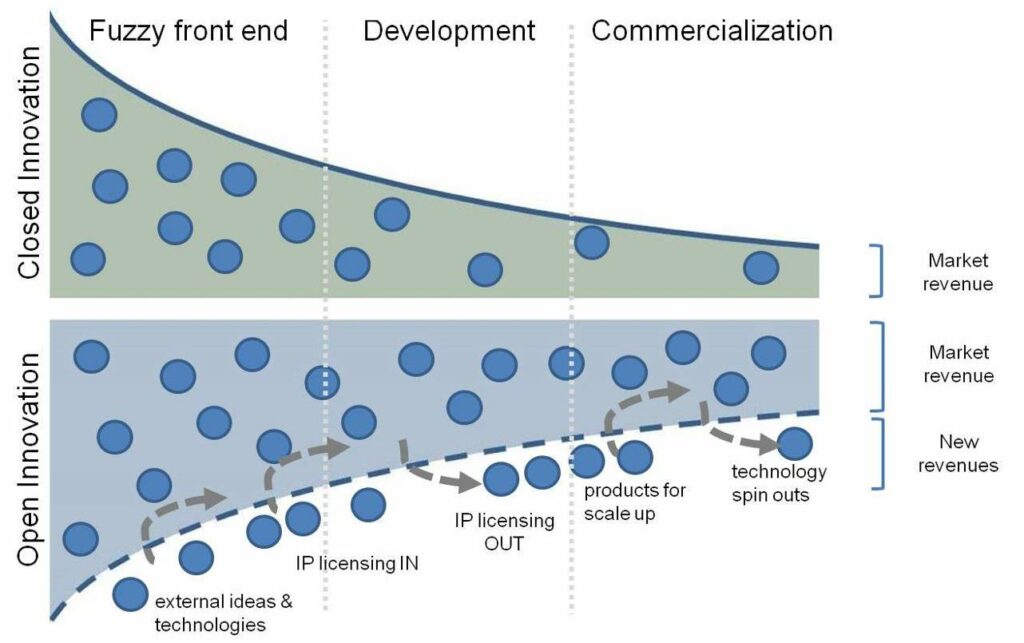Advantages
Benefits and opportunities
Open innovation and collaboration in the supply chain – if well managed – can bring the following benefits:
● Access to external resources (knowledge, expertise, facilities, network, ideas)
● Quality and speed of innovation (if well managed)
● Access to new markets and additional income (including valorization of knowledge outside the organization)
● Lower costs and spread of risk

Access to external sources
There are more intelligent people OUTSIDE the organization than inside! This is a slogan often used to promote open innovation. It seems logical that this is even better applicable for startups and SMEs. After all, open innovation provides companies access to:
● Specialized knowledge (technical, economic, market)
● Specific facilities and skills (e.g. labs)
● Network and contacts (through partners)
● Ideas (e.g. from customers, end users or suppliers)
● External financing

Quality and speed of innovation
Open innovation should help to increase the quality, speed and returns of innovation.

The innovation process is known to be difficult to manage and unpredictable in terms of lead time, costs and returns. Many SME manufacturing companies would like to have ’their own product’ but fail to make it happen. But also large companies, with a lot of knowledge and facilities, have to deal with loss of profitability, delays and failures along the way.

Even after market introduction, success is not guaranteed. Of all introduced products, 76% are NOT on the shelves within 1 year of market introduction.

Access to new markets and additional income
Open innovation should lead to more good ideas finding their way to the market. This is achieved by
- Generating more and better ideas
- Improving the efficiency of product development through collaboration, and speeding up the process (see also previous block).
- Generating more turnover in existing and new markets.
- Valorize knowledge and intellectual property through other companies and channels
More, and more successful products in existing markets, entry into new markets, spin-outs and IP licenses should result in additional revenues and strengthened competitive position.
Lower costs and spread the risks
Innovating costs money, at all stages of the process. Did you know that decisions are already made in the development phase that determine the costs in the further process and during the entire life cycle of the product.
Involving external parties in (market) research, the generation and evaluation of new ideas, product development and engineering results in higher expenses per se, but can bring substantial savings for the entire innovation process and PLC.
External parties can also participate on a risk-bearing basis. This reduces the costs and risks even further!

Summary open innovation and benefits
Watch the video about the concept of open innovation and discover what advantages open innovation can offer!
The video by no means mentions that there are also disadvantages and extra costs involved in open innovation. That open innovation is not always the most appropriate approach. The next part covers disadvantages in more detail.
